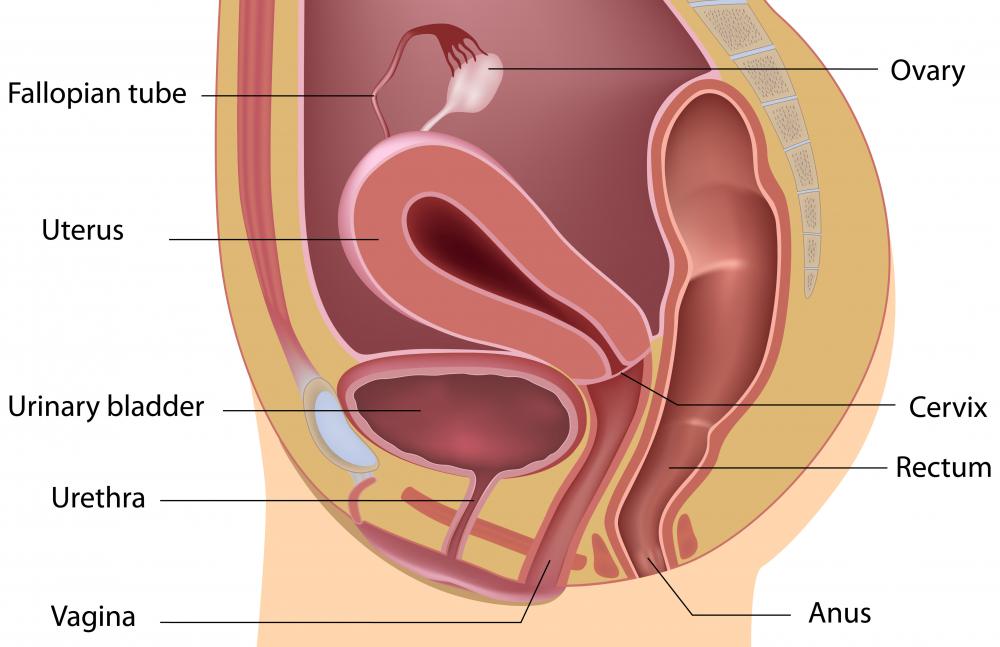At WiseGEEK, we're committed to delivering accurate, trustworthy information. Our expert-authored content is rigorously fact-checked and sourced from credible authorities. Discover how we uphold the highest standards in providing you with reliable knowledge.
What are the Different Types of Prolapsed Uterus Treatment?
When the pelvic muscles and ligaments become weak, the uterus can fall into the vaginal cavity. Prolapsed uterus treatment may not be required for women who have only a mild case. To keep it from getting worse; however, they should make certain lifestyle changes, such as quitting smoking. When these changes are no longer sufficient, the patient may need to insert a vaginal pessary to support the uterus. Prolapsed uterus treatment may also include surgery to provide additional support to the area.
Patients whose symptoms are not uncomfortable and do not interfere with daily life may not require medical treatment. Since a uterine prolapse can worsen over time, they should focus on lifestyle changes to slow the condition's progression. Patients who use tobacco are advised to quit, because excessive coughing due to smoking and lung disease can strain the pelvic area. Those who are overweight can benefit from losing excess weight. This can also reduces stress to the pelvic floor muscles.

In addition to these lifestyle changes, prevention measures can also include regularly performing Kegel exercises. These are simple muscle contractions can help make the pelvic floor muscles stronger. The woman must contract the same muscles that are used to stop urination. After holding the contraction as long as she can, she will then release the muscles and repeat the exercise. The length of time of each contraction can gradually be increased.

Patients who suffer from uncomfortable symptoms may consider the use of a vaginal pessary. This type of prolapsed uterus treatment is a device that is inserted into the vagina to support the structures. Each patient will be fitted for the size and shape of vaginal pessary that fits her most comfortably. They should be able to perform movements such as sitting, squatting, and lying down without feeling discomfort from the device. It may be necessary for patients to use this device permanently; however, some women may not need to wear it at night.

Several factors determine whether a patient's prolapsed uterus treatment may include surgery. It may be recommended for women with a severe degree of prolapse. The patient's general health will be taken into consideration, as well as whether she has any other medical conditions. Patients should also consider whether they wish to become pregnant in the future.

Sometimes, a surgical repair instead of a hysterectomy is possible for prolapsed uterus treatment. The surgeon will use a graft to provide additional support to the pelvic organs. A graft may be devised with the patient's own tissues or it may be made from synthetic materials. Often, a vaginal hysterectomy is needed to treat a uterine prolapse, which involves making an incision in the vagina in order to remove the uterus.
AS FEATURED ON:
AS FEATURED ON:
















Discuss this Article
Post your comments